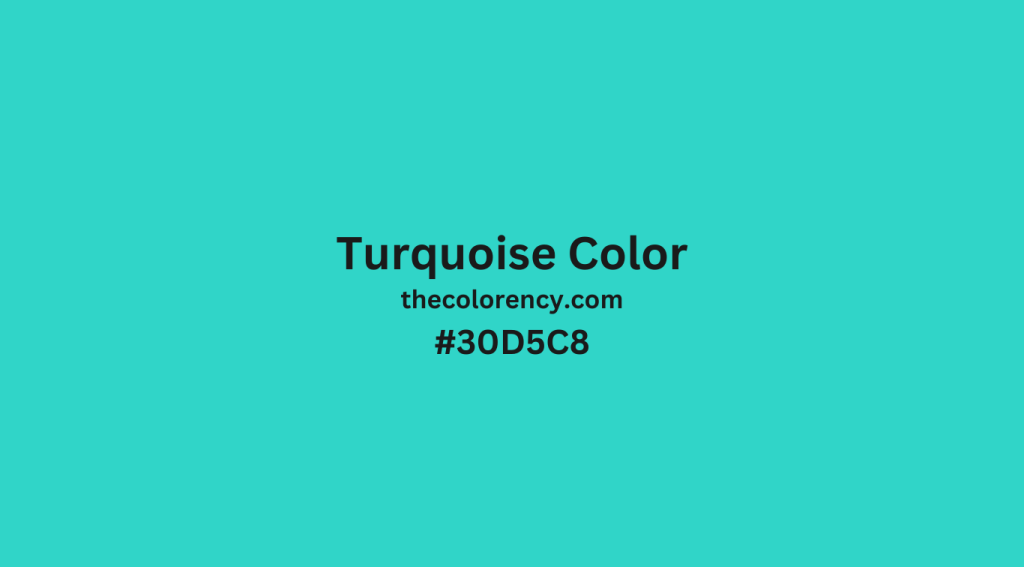
Turquoise is a stunningly beautiful color that has been used for centuries to decorate walls, clothing, jewelry, and much more. It is a unique combination of blue and green, and is often considered a representation of the sea and sky. In this blog post, we will discuss everything you need to know about the turquoise color, from its history to its various shades.
What is the Turquoise Color?
The turquoise color blends blue and green, and it typically falls within the range between blue and green. Various cultures have used this unique shade for centuries to adorn walls, clothing, jewelry, and other objects. Turquoise symbolizes peace and serenity and is closely connected to the sea and sky.
History of the Turquoise Color
Centuries ago, ancient Egyptians were the first to use the turquoise color, believing it to symbolize good luck and protection. They adorned jewelry and various objects with turquoise. During the Middle Ages, turquoise became a representation of royalty, with wealthy families utilizing it to showcase their status.
Different Shades of Turquoise
The turquoise color can be found in many different shades, from light blue to dark green. One of the most popular shades of turquoise is called “teal,” which is a darker shade of blue-green. Another popular shade is “aqua,” which is a light shade of blue-green. There are also several other shades of turquoise, including turquoise blue, turquoise green, and turquoise grey.
Uses of the Turquoise Color
The turquoise color is often used in interior design, particularly for bathrooms or living rooms. It is a calming color that can add a sense of serenity and relaxation to any room. It is also often used in jewelry, and is a popular choice for engagement and wedding rings. The turquoise color is also often used in clothing, and it is especially popular in summer fashion.
Benefits of the Turquoise Color
Interior designers frequently incorporate the turquoise color, especially in bathrooms or living rooms, to infuse a sense of serenity and relaxation into the space. The color is commonly employed in jewelry, particularly for engagement and wedding rings. Additionally, it finds extensive usage in clothing, particularly in the realm of summer fashion.
How to Use the Turquoise Color in Your Home
If you want to add the turquoise color to your home, there are several ways to do so. One option is to use it as an accent color, such as painting one wall in the room a turquoise color. You could also use it as a base color for your furniture, or use it as a trim on curtains or rugs. You could also add the color to your decor with throw pillows, vases, and other decorative items.
How to Match the Turquoise Color
When matching the turquoise color, it is important to consider the other colors in the room. For example, if you have a light blue wall, you may want to use a darker shade of turquoise to create contrast. You could also pair the turquoise color with other colors, such as white, gray, black, or beige.
Famous Turquoise Pieces
The turquoise color has been used for centuries in various pieces of art and jewelry. One of the most famous pieces of turquoise jewelry is the Crown Jewels of England, which feature a large turquoise stone. Another famous piece of turquoise jewelry is the Fabergé egg, which is made from gold and turquoise.
Conclusion
The turquoise color is a unique and beautiful shade that has been used in various cultures for centuries. It is a blend of blue and green, and is often associated with the sea and sky. It is a calming color that can bring luck and protection, and is often used as a symbol of peace and serenity. The turquoise color can be used in various ways in your home, and it can be matched with other colors to create a unique look.
The turquoise color is a stunning hue that has been used in various cultures for centuries. From its history to its various shades, there is so much to know about the turquoise color. We hope this blog post has given you a better understanding of everything you need to know about the turquoise color.
